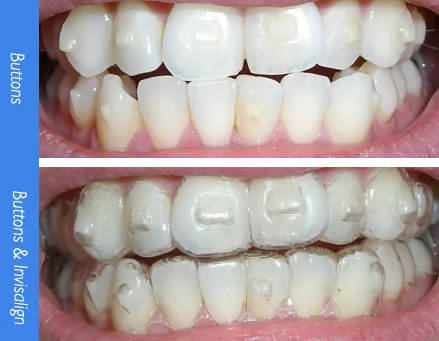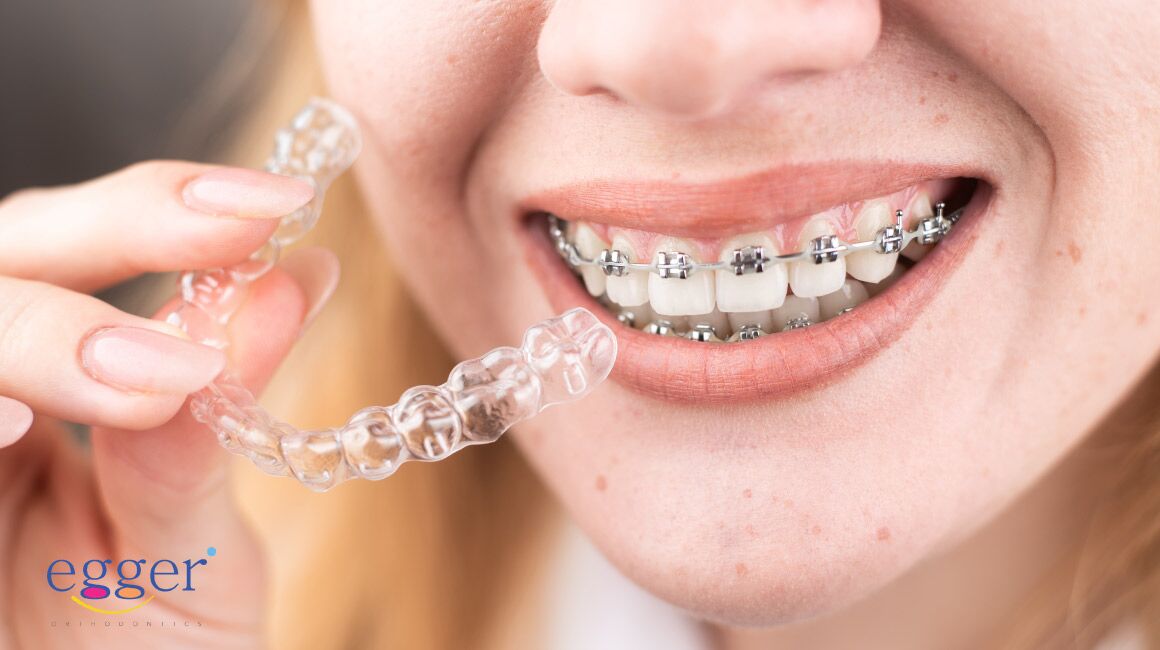Frequently Asked Questions Concerning Invisalign: Everything You Required to Know
Frequently Asked Questions Concerning Invisalign: Everything You Required to Know
Blog Article
Invisalign vs. Traditional Dental braces: Which Choice Is Right for You?
When considering orthodontic therapy, the choice in between Invisalign and conventional braces offers numerous crucial variables that merit careful analysis. Invisalign supplies a discreet choice with detachable aligners, while traditional braces provide a more visible yet efficient remedy for extreme imbalance. Each alternative includes unique advantages and drawbacks connected to appearances, convenience, treatment period, and expense. Understanding these subtleties is critical for making an educated choice that aligns with your individual choices and way of life. The question stays: which option will best satisfy your orthodontic demands and assumptions?
Overview of Treatment Alternatives

In comparison, standard dental braces contain metal braces and wires that are bonded to the teeth. This approach uses constant stress in time to attain alignment. While efficient for intricate orthodontic issues, typical braces need normal brows through for modifications and can position difficulties in keeping oral health due to the trouble of cleaning up about braces and wires.
Both alternatives have their benefits, and the option frequently hinges on details oral conditions, lifestyle preferences, and person compliance. Eventually, getting in touch with an orthodontic specialist is vital for identifying the most suitable therapy strategy customized to specific demands. Comprehending the subtleties of each alternative can dramatically affect the total success of orthodontic treatment.
Aesthetic Considerations
A significant variable influencing the option between Invisalign and conventional dental braces is the visual appeal each therapy uses. Invisalign aligners are crafted from clear plastic, making them practically unnoticeable when worn.
On the other hand, conventional dental braces consist of steel brackets and wires, which can be extra obvious. While developments in orthodontic modern technology have actually led to the advancement of smaller brackets and tinted elastics, traditional dental braces still maintain an even more conspicuous profile. For some individuals, the presence of braces might deter them from looking for essential treatment.
Inevitably, the option in between Invisalign and standard braces may hinge on personal choices pertaining to visual appeals. People who prioritize discernment frequently favor Invisalign, while those that are less concerned concerning presence may choose for traditional braces. Understanding the visual effects of each option is important for making an educated choice that aligns with one's lifestyle and preferences.
Convenience and Convenience

In regards to benefit, Invisalign aligners are detachable, allowing people to enjoy their preferred foods without limitation and preserve optimal oral hygiene. Cleaning and flossing are simplified, as the aligners can be taken out throughout these routines, whereas traditional dental braces need careful maneuvering around braces and cables.
Furthermore, Invisalign's progressive system permits fewer orthodontic sees. Clients generally obtain several sets of aligners at as soon as, which can improve the therapy process and lower time spent in the orthodontist's chair. On the other hand, standard braces demand routine changes, making them much less hassle-free for those with hectic schedules. Invisalign. Generally, the comfort and comfort of Invisalign make it an appealing selection for numerous people looking for orthodontic therapy.
Therapy Duration and Performance
While both Invisalign and standard dental braces are efficient in dealing with dental imbalances, the duration of treatment can differ substantially in between the two choices. Usually, Invisalign treatment can take anywhere from 12 to 18 months, depending upon the intricacy of the instance. The clear aligners work by slowly moving teeth right into their preferred placements, and regular follow-ups with an orthodontist help guarantee development continues to be on course.
On the other hand, traditional dental braces typically need a longer dedication, normally ranging from 18 months to 3 years. This results from their set pop over to this site nature and using braces and cords, which can be extra effective for complicated situations and serious misalignments (Invisalign). The treatment efficiency of standard dental braces is well-documented, as they enable precise adjustments and greater control over tooth movement
Ultimately, the choice between Invisalign and conventional braces may depend upon both the anticipated treatment duration and the particular dental issues at hand. Consulting with an orthodontist is important, as they can give customized referrals based upon specific demands, ensuring the picked approach straightens with wanted timeframes and outcomes.
Cost Contrast and Insurance Policy Alternatives
Price plays a substantial duty in the decision-making procedure for people thinking about orthodontic treatment, whether choosing for Invisalign or traditional braces. On standard, the expense of Invisalign varieties from $3,000 to $8,000, while conventional braces generally cost in between $2,000 and $6,000. Variables affecting these expenses include the complexity of the instance, the period of treatment, and geographical area.
Insurance policy coverage can significantly influence out-of-pocket expenditures. Lots of dental insurance policy plans provide partial insurance coverage for orthodontic treatments, yet the specifics can vary widely. It is vital for clients to review their insurance coverage to determine the degree of coverage for either alternative. Typically, typical dental braces may be extra often covered by insurance plans imp source contrasted to Invisalign, which some insurance companies categorize as an aesthetic treatment.
In addition, several orthodontic practices use adaptable settlement plans, making both treatment choices a lot more available. Individuals need to inquire regarding possible funding options and discount rates for in advance settlements. Reviewing the complete price, including insurance policy advantages and repayment strategies, is essential for making a notified decision that aligns with both aesthetic preferences and budget plan considerations.

Verdict
In recap, the selection between Invisalign and typical braces pivots on numerous factors, consisting of visual choices, comfort, treatment duration, and cost. Invisalign provides a discreet, detachable alternative that promotes dental hygiene and dietary versatility, while standard braces may be more suitable for intricate oral problems and commonly come at a lower price factor. Eventually, appointment with an orthodontist is vital to examine private situations and determine the most suitable treatment alternative for attaining ideal dental placement.
When thinking about orthodontic treatment, click for info the selection in between Invisalign and standard braces presents numerous essential elements that warrant cautious evaluation.Contrasting Invisalign and typical dental braces exposes distinct therapy options for orthodontic improvement.While both Invisalign and typical braces are reliable in remedying oral misalignments, the period of treatment can differ dramatically between the 2 options.Expense plays a significant duty in the decision-making procedure for people considering orthodontic therapy, whether deciding for Invisalign or conventional dental braces.In summary, the option in between Invisalign and conventional dental braces pivots on several variables, including aesthetic choices, convenience, treatment period, and cost.
Report this page